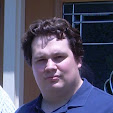The Gundam Epyon: the demon to the Wing Zero's angel, Trieze's ideal of chivalry. The Gundam Epyon was first hinted at only a couple episodes after the introduction of the Wing Zero but its’ true ability would not be revealed until much later in the series. A suit designed for dueling and engaging the enemy face to face, the Epyon was originally armed with an over charged beam saber and a segmented whip that could be heated and used to cut through even heavy armor. Like the Heavy Arms Custom Kai, I built this model years ago, and like that I'm looking back at my work then and thinking "Wow... I didn't have a clue what I was doing back then."
This project is going to involve several things and major phases. The first major phase will be the "scratch building" phase. If you look at the image at the head of this post, you can see the pose I’m going for with this model. Epyon, standing at the apex point of the Libra Battle station, with its beam saber powered on, its search eye activated and its eyes glowing. Since I’m going to build LEDs into the model I will need a power source. When I do lighting projects I like to have the battery pack accessible so that I can replace batteries as I need to. So, the battery pack will be placed on the underside of the base along with the control switch. To keep with the image, I’m going to be fashioning a base to resemble the Libra battle ship to house the majority of the electronic components.
The Second phase will be the “casting” phase. One of my objectives with this project is lighting up the beam saber and the chest mounted combat eye/camera. To accomplish this, I’m going to recast the parts in green-tinted transparent resin. By being able to cast the parts, I can embed an LED in the resin and then connect those LEDs to a power source to illuminate the resin. That is my hope, at least. Time will tell if I am able to follow it through. With the base, the cast parts and the lights, I think the entire model will work well enough without the means to move the arms around. I think the trade-off will be worth it though.
The third phase will be about modifying the model to become a mono-pose setup. This is going to involve replacing the poly-vinyl joint caps with styrene pieces that will be glued into place locking joints into the configuration. The other part of this will be modifying parts of the model to accept the wires and LEDs. For instance, the head would normally use a poly-vinyl cup that would sit on the ball joint of the neck. That will be modified to be styrene, and thus not pose-able, so that I can pass the wires from the LED through the neck.
The last major phase of the project will be the assembling and detailing phase. In this phase I will be using pigment powders and paints to add details such as shadowing and panel lines. I’m going to use a sheet of decals from the master grade Epyon to add some additional detail to this model.
This project is really turning into the prototype effort for my Wing Zero project. I originally settled on this project with the intention of just lighting up the beam saber, then that turned into lighting up the eyes, which turned into lighting up the chest gem. The building of the Libra base was more a choice of doing something aesthetically pleasing, more than just building a box for the model to stand on.
So the first thing I went to work on was designing the base that will house the electronics and the batteries. For that I turned to a friend of mine who is an architect (helpful hint for modelers who scratch build: If you don’t know architectural design, become friends with someone who does). I explained to her that I wanted to design a base that was effectively an eight sided pyramid with the even sides being small and narrow and the odd sides being wide. We exchanged a couple more notes and she came back to me with this:
While it’s fairly simplistic, it gives me the information to start work on the base with my own skills. After a few hours of cutting and gluing I came up with this:
The larger box in the middle houses a 4-AA battery pack, while the smaller box to the side of that box houses a single pole switch that will control the entire circuit in the model. This is a fairly simple circuit and anyone who has any experience with electronics can build it. That isn’t the real challenge for this project, however. The challenge is changing the model to accommodate these changes, and creating the new parts.
Next time I’ll be talking about creating the molds for casting the new parts.


























